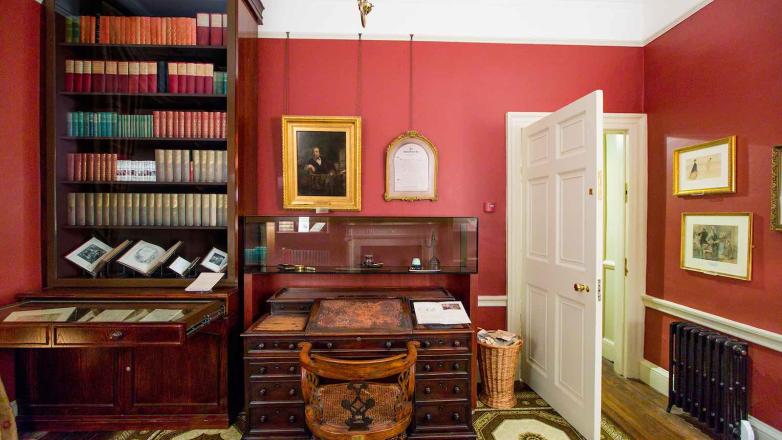Search Underway for Wilkie Collins' Handwritten 'Worst to Best' Rankings of Dickens

Charles Dickens's study at 48 Doughty Street, London
Organisers of a new exhibition to open next month at the Charles Dickens Museum are hunting for novelist Wilkie Collins' honest appraisal of his friend Charles Dickens' novels.
Mutual Friends: The Adventures of Charles Dickens & Wilkie Collins opens next month at the museum, Dickens' former home, in London and will be the first to explore their friendship.
However, after Dickens’s death Wilkie Collins, author of The Woman in White, revealed exactly what he thought about his major works. In handwritten notes by Collins in his copy of John Forster’s The Life of Charles Dickens, discovered in Collins’s library after his death, he gives quick opinions of several of Charles Dickens’s books:
- Barnaby Rudge: "the weakest book that Dickens ever wrote"
- Dombey and Son: "the latter half of Dombey no intelligent person can have read without astonishment at the badness of it, and the disappointment that followed lowered the sale of his next book, ‘Copperfield'"
- The Mystery of Edwin Drood: "cruel to compare Dickens in the radiant prime of his genius with Dickens's last laboured effort, the melancholy work of a worn out brain"
- David Copperfield: "incomparably superior to Dombey"
- Oliver Twist: "The one defect in that wonderful book is the helplessly bad construction of the story. The character of Nancy is the finest he ever did. He never afterwards saw all sides of a woman’s character – saw all round her. That the same man who could create Nancy created the second Mrs Dombey is the most incomprehensible anomaly that I know of in literature"
- Martin Chuzzlewit: "That Chuzzlewit (in some respects the finest novel he ever wrote) delighted his readers, and so led to a large sale of the next book, ‘Dombey’, I don’t doubt"
In addition, on the first page of the book, where Forster proclaims ‘Charles Dickens, the most popular novelist of the century‘, Collins adds "after Walter Scott".
The copy of The Life of Charles Dickens containing Wilkie’s notes was sold by auction house Puttick and Simpson on January 22, 1890, and its whereabouts is now unknown. Now, the Charles Dickens Museum is hoping to locate the book in an attempt to include it in Mutual Friends: The Adventures of Charles Dickens & Wilkie Collins.
“This copy of Forster’s biography is a treasure trove of the unvarnished opinions of a great author on a fellow great author and friend," said Emma Harper, curator of the exhibition. "We know that Collins and Dickens were very often frank with each other but, as almost all of Collins’s letters to Dickens were burnt by the recipient, any written confirmation of this is fascinating and historically valuable. We would be very grateful for any information on its whereabouts today.”
Wilkie Collins’s reviews of his friend’s books were recorded in the January 20, 1890 issue of the Pall Mall Gazette, in an article previewing the auction, two days later, which notes that Collins’s "estimates of some of Dickens’s stories are terse, direct and vigorous".
As all but three of Wilkie’s many letters to Charles do not survive, evidence of his views of his friend’s books is rare. However, one additional opinion can be found in his preface to the 1860 edition of The Woman in White, in which Wilkie glows about A Tale of Two Cities: "[I] accepted the serious literary responsibility of appearing in the columns of 'All The Year Round' immediately after Mr. Charles Dickens had occupied them with the most perfect work of constructive art that has ever proceeded from his pen."















